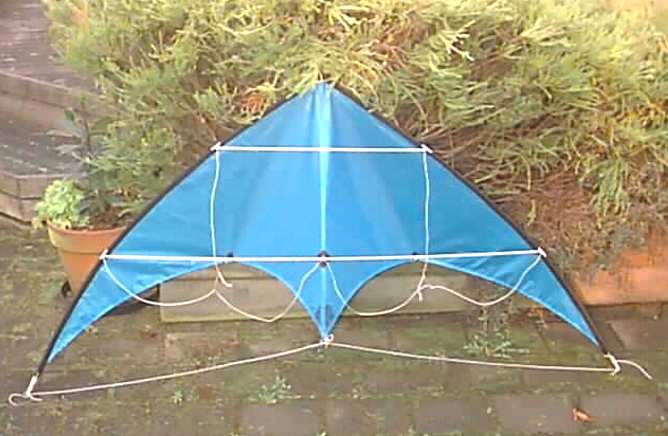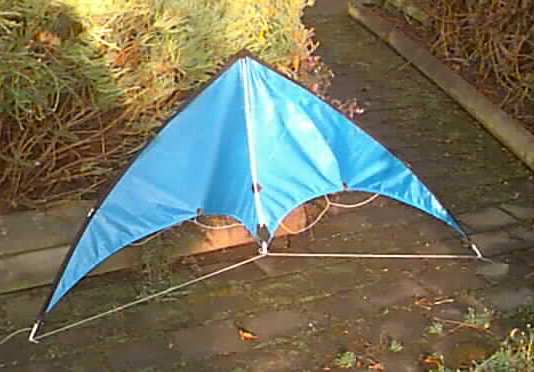Finally, somebody on the other
side of the world has got 'round to building a BDub. Here's some pics of theirs
and some words for your edification :O)
We've built a BDub and flown
it, once. Time and it is a big, or bigger than
we've been flying - not
figured out a good way to derig it for transport
yet so we took something
smaller when we went away last weekend.

Flying - my partner did
most of the flying while I tried to keep an Indian
in the air without much
success - walking the length of a football field's
worth of flying each
launch while she very gently curved up the sky with
the BDub.
SPARS
??? this kite I definitely UNDER sparred (I've had to "down" spar
some kites
so got carried away here), 3 mm glass!! The main problem is the
lack of a
good source (so far) of carbon. Solid rod I can get from 2.2, 3,
3.6, 4,
4.6, 5, 6 mm. Even something like 7 mm glass tube is available!

Question, with those
materials available, allowing for performance
degradation, which rod would
you recommend?
Incidently the standoffs are bamboo!! I use heatshrink on
the sail end of
the standoff over a length of string. The shrunk down part
of the
heatshrink tube goes through tthe sail with the string which is tied
back
round the trailing edge to the standoff. The standoff can't get lost
and no
special plastic fitting is needed (another item in short supply
here).
Sandy
So. Below is my answer to the
question of sparring:
Hmm. The MK III was originally
sparred with 4mm solid RCF all round. After a
few hours flying, the spine and
lower spreaders were changed to 5.5mm RCF
tube. From your list of supplies
I'd go for the 4mm RCF rod for the leading
edges and upper spreader and 5mm
for the spine and lower spreaders. The will
be some flight alteration
although mostly this will be in the increased wind
requirement. You may even
find that the extra weight will help in some
tricks. Don't forget here that
the sail shape was intended to grab *alot* of
wind, so a little extra weight
here and there in the frame should be OK. the
reason the MK III was re-framed
was that the 4mm RCF rod was a bit - shall
we say - bendy in anything more
than a light breeze. The extra stiffness of
the 5.5 mm tube stopped this
without significantly changing it's innate
flight
characteristics.

